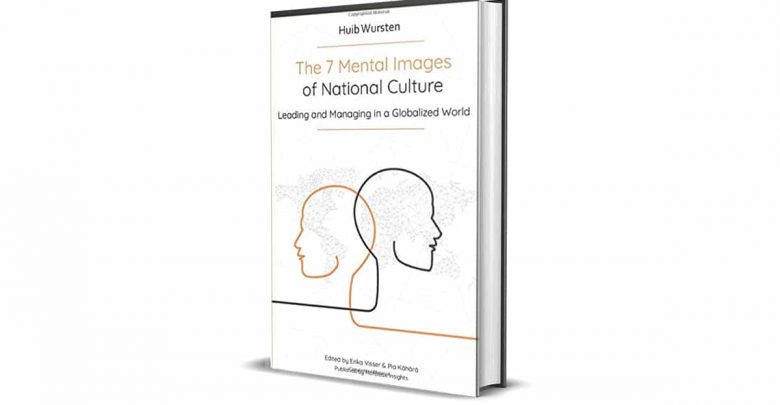It’s All In the Image

Exclusive interview with Huib Wursten, world’s top authority on business management training
Huib Wursten, born in 1942, is a world renowned specialist on advising companies and supra-national organizations in how to manage global teams. Since 1989 he has been working in this field with a variety of Fortune top 1000 companies. He has worked in and with public and private organizations in 85 countries on various continents. His main clients in the business sector are IBM, 3M, McCain, Quest, Texaco, ABN AMRO, Nike and Unilever. From 1994 he conducts courses at and gives advice to the IMF in Washington and from 2000 on he does the same for the European Central Bank in Frankfurt. Other important non-profit organizations he has been involved with are Europol, the World Bank, UNDP, Council of Europe and the Dutch peacekeeping forces. He has advised the Russian administration on the influence of culture on political and economic behavior. Wursten has written an award winning paper which was published for “Nyfer”, a Research Institute related to Nijenrode University “MentaleBeelden. De invloed van Cultuur op (economisch) Beleid” (Mental Images. The influence of culture on economic policies). He is fluent in English, German, French, and Dutch.His latest book, “The 7 Mental Images of National Culture. Leading and Managing in a Globalized World”, has struck a chord among companies and businesses around the world.

Huib Wursten talked to ME Printer’scontributing editor, Karina Princess Bagration, (Swiss Institute of Cultural Diplomacy). Here are the excerpts:
KPB: Tell us something about your background?
I was born in the Netherlands and Studied Educational Psychology in Amsterdam. Most of my working life I have been focusing on transfer of knowledge to adults. First in a rather homogeneous culture like the Netherlands. Later in global companies with very diverse employees.
KPB: What made you study relations between management and culture?
When I started in the early seventies, management training was mostly based on Anglo-Saxon theories. But the practice showed that Anglo-Saxon approach did not work for other cultures like France, Russia and Middle East.I discovered that these theories were also not “covering” the realitiesof my country, the Netherlands either.I started defining how and where I could identify the differences and make people more successful. I discussed this with a person I met during a conference organized by Clingendael, the diplomatic training institute in the Netherlands. That wasBob Waisfisz, who told me that my ideas were very much conform the findings of Professor Geert Hofstede who already in that time was considered worldwide to be the Godfather of modern intercultural management. Bob Waisfiszat that time just started a consultancy to apply the Hofstede research and make companies to understand both their international personnel and customers a lot better.
KPB: Why, how, where did you develop the Mental Images?
I always wanted to work with highly educated people, challenging too easy generalizations, exchanging ideas and sharing critical opinions but probably the most important experience was when I worked for the IMF. This is an incredibly diverse working environment. Just fancy, in one building in Washington professionals from more than 120 countries are working together. Complicated, is not it? For years,I delivered almost monthly workshops and seminars. It was during these workshops that I realized that, even though I had been talking about the 4 Hofstede Dimensions of National Culture, I rarely ended up discussing cultural dimensions one-by-one. Instead, I always discussed them in combinations. That’s when I began to see some patterns.
I discussed my thoughts with the staff development head of the IMF, Dinah Nieburg. She has been supportive. She suggested putting my ideas on paper in a systematic way. The work resulted in the first 5 of the Mental Images. The 6th Mental Image, the Solar System, was added based on a consultation with Professor Hofstede. My customers and colleagues have helped me to sharpen the model and its implications.
KPB: What are the 7 Mental Images?
I’m of course standing “on the shoulders” of the guru of cultural management: Geert Hofstede. Having the information from worldwide and matched samples, he analyzed this database with statistical techniques like factor analysis. Doing this he found basic value dimensions that are the core of understanding cultural diversity.Combining the dimensions,I could distinguish 7 different clusterswith behavioral patterns which come as a consequence. I called these 7 patterns mental images because each one provides an internal “picture” in the heads of people of what societies and organizations look like. Because these mental images are very basic, I was able to compare the 7 different ways people handle business in their cultural environment. Elements like leadership, decision making, meeting behavior, delegation, control, conflict solving, etc.Now we have 23 of these systematic comparisons in total.
KPB: Can you describe the Mental Images shortly?
Each mental image represents a cluster of countries, which have certain characteristics(scores) in common.
- The contest model (`winner takes all´)
Competitive Anglo-Saxon cultures with low power distance, high individualism and masculinity, and fairly low scores on uncertainty avoidance. Examples: Australia, New Zealand, UK and USA.
- The network model (consensus)
Highly individualistic, `feminine´ societies with low power distance like Scandinavia and the Netherlands. Everyone is involved in decision-making.
- The organization as a family (loyalty and hierarchy)
Found in societies that score high on power distance and collectivism and have powerful in-groups and paternalistic leaders. Examples: China, Taiwan, Hong Kong, India, Indonesia, Malaysia, Philippines and Singapore.
- The pyramidal organization (loyalty, hierarchy and implicit order)
Found in collective societies with large power distance and uncertainty avoidance. Examples: much of Latin America, Greece, Portugal, Russia and South Kora.
- The solar system (hierarchy and an impersonal bureaucracy)
Similar to the pyramid structure, but with greater individualism. Examples: Belgium, France, Northern Italy, Spain and French speaking Switzerland.
- The well-oiled machine (order)
Found in societies with low power distance and high uncertainty avoidance, carefully balanced procedures and rules, not much hierarchy. Examples: Austria, Germany, Czech Republic, Hungary, German speaking Switzerland.
- Japan (This country has no other countries to be compared to).
KPB: What about Middle Eastern countries?
The countries of the Middle East region (with some variations from country to country) resemble a lot of thepyramidal organizationmentioned above. They do have some distinct attributes in common with Latin America, Greece, Portugal, Russia and South Kora. Very important is that leadership in such cultures is very much connected to a “moral“ element, another words in return for loyalty of the employees the “Boss” is takes care of them like the father of the family. This is going further than only the work related issues. It is also about family issues and personal problems solving if necessary. Doing business requires building trust. This usually takes some time. The moment trust is established, the business is related to the relationship.
KPB: How can 7 Mental Images help cosmopolitan businessmen to be successful?
The mental images can help in “bridging” different management approaches. They help in defining what the real, fundamental differences are without being judgmental. It clarifies why many of the standard management theories are culturally loaded, and as a result, are not “working” in other value systems.It is important that leadership of global organizations understand that forcing employees in a system that is not carried by their own value system is in most cases only leading to misunderstandings and even worse: conflicts. Moreover,when doing, business it is essential that there are different “rules of the game at work”. It helps tremendously to understand how your customers think about how to negotiate and build trust.
KPB: Do cultural difference really matter?
In order to find relevant solutions, one must understand the differences between the culture clusters first. Only then, one is able to make the company a good working place for all and ensure its global success. Let me use HR as an example; when looking at different HR tasks, the approach to these tasks differs in each cluster. For instance, people behave differently in recruitment situations in different clusters. In some cultures, you are expected to mention all your successful deals, in other cultures this will ruin your credibility, as“boasting” is not appreciated. You are supposed to be modest. Consequently, the knowledge of cultural management helps company top management to develop the set of approaches helping to lead the company to success.
KPB: How will top managers benefit from your recently published book 7 Mental Images?
After publishing more than 20 papers on aspects of international management,I realized that I needed to put my thoughts on paper in a coherent way. I am grateful that my colleagues Erika Visser and Pia Kähärä helped me write this book. Their critical thinking, questions and comments, and editing the text to its final form have been invaluable in completing this project. It is fair to say that without their help this book would not exist. In addition, many other colleagues at Hofstede Insights and numerous other peopleincluding yourself, Princess Karina.
The 7 Mental Images of National Culture. Leading and Managing in a Globalized World A book by HuibWursten, edited by Erika Visser and Pia Kähärä Get it on amazon: https://amzn.to/2Vyve5l.

Karina Princess Bagration

.gif)




71 Comments